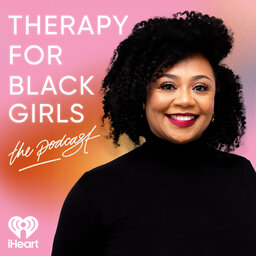Session 334: Brainspotting
The Therapy for Black Girls Podcast is a weekly conversation with Dr. Joy Harden Bradford, a licensed Psychologist in Atlanta, Georgia, about all things mental health, personal development, and all the small decisions we can make to become the best possible versions of ourselves.
In passing, you’ve likely heard the phrase, “the eyes are the windows to the soul.” But did you know that there is an emerging body-based modality that works to process client trauma through movement in the eyes? It’s called ‘Brainspotting,’ and today’s guest is here to share all about it. Nicole Bryant is a licensed Mental Health clinician practicing in North Carolina who specializes in neuro-psychotherapy and is currently a Certified Brainspotting Practitioner.
In our conversation today, we discuss the science behind Brainspotting, how Brainspotting can serve as an alternative for clients dissatisfied with talk therapy, and why she believes communities of color could benefit most from this treatment.
Resources & Announcements
Shop our "Take Good Care" Holiday Merch line!
Visit our Amazon Store for all the books mentioned on the podcast.
Grab your copy of Sisterhood Heals.
Where to Find Nicole
Stay Connected
Is there a topic you'd like covered on the podcast? Submit it at therapyforblackgirls.com/mailbox.
If you're looking for a therapist in your area, check out the directory at https://www.therapyforblackgirls.com/directory.
Take the info from the podcast to the next level by joining us in the Therapy for Black Girls Sister Circle community.therapyforblackgirls.com
Grab your copy of our guided affirmation and other TBG Merch at therapyforblackgirls.com/shop.
The hashtag for the podcast is #TBGinSession.
Make sure to follow us on social media:
Twitter: @therapy4bgirls
Instagram: @therapyforblackgirls
Facebook: @therapyforblackgirls
Our Production Team
Executive Producers: Dennison Bradford & Maya Cole Howard
Producers: Fredia Lucas & Ellice Ellis
Production Intern: Zariah Taylor
 Therapy for Black Girls
Therapy for Black Girls


